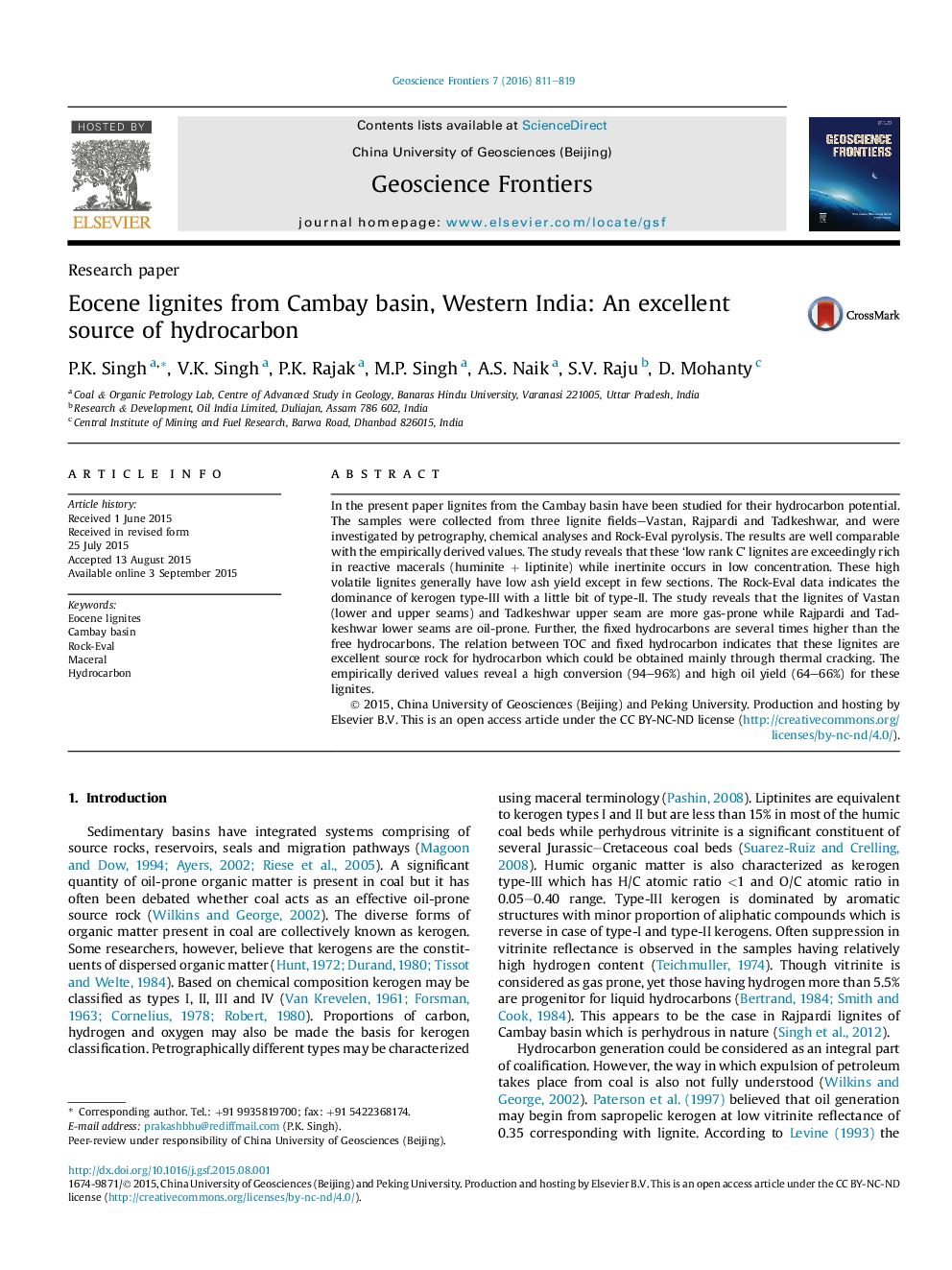| Article ID | Journal | Published Year | Pages | File Type |
|---|---|---|---|---|
| 4681480 | Geoscience Frontiers | 2016 | 9 Pages |
•Cambay lignites are excessively rich in reactive macerals.•They are dominated by kerogen type-III and little bit of type-II organic matter.•Fixed hydrocarbons are several fold higher than free hydrocarbons.•These are excellent source of hydrocarbon.•The conversion and oil yield is high.
In the present paper lignites from the Cambay basin have been studied for their hydrocarbon potential. The samples were collected from three lignite fields–Vastan, Rajpardi and Tadkeshwar, and were investigated by petrography, chemical analyses and Rock-Eval pyrolysis. The results are well comparable with the empirically derived values. The study reveals that these ‘low rank C’ lignites are exceedingly rich in reactive macerals (huminite + liptinite) while inertinite occurs in low concentration. These high volatile lignites generally have low ash yield except in few sections. The Rock-Eval data indicates the dominance of kerogen type-III with a little bit of type-II. The study reveals that the lignites of Vastan (lower and upper seams) and Tadkeshwar upper seam are more gas-prone while Rajpardi and Tadkeshwar lower seams are oil-prone. Further, the fixed hydrocarbons are several times higher than the free hydrocarbons. The relation between TOC and fixed hydrocarbon indicates that these lignites are excellent source rock for hydrocarbon which could be obtained mainly through thermal cracking. The empirically derived values reveal a high conversion (94–96%) and high oil yield (64–66%) for these lignites.
Graphical abstractFigure optionsDownload full-size imageDownload as PowerPoint slide
